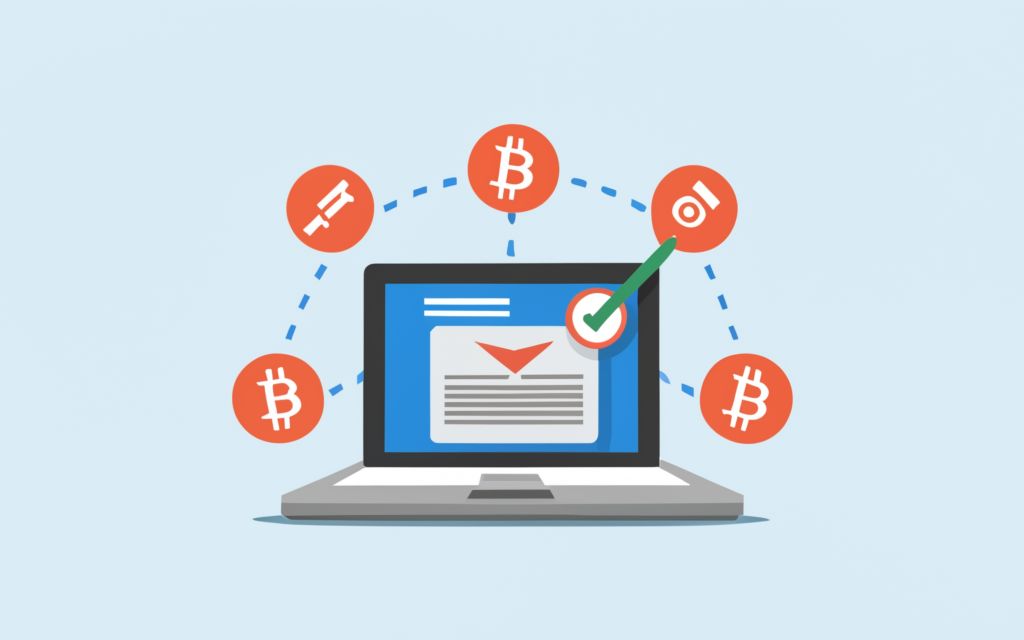Crypto Phishing Attacks: How to Recognize and Avoid Them

Crypto Phishing Attacks: How to Recognize and Avoid Them
The Growing Threat of Crypto Phishing
Phishing remains one of the dominant threats facing cryptocurrency participants as scammers grow increasingly sophisticated. By impersonating trusted entities via email, SMS, ads or websites, they trick users into surrendering login credentials or keys to drain accounts. Some phishing groups have stolen millions in assets. Urgent education around detecting and avoiding phishing protects against this prevalent menace.
Anatomy of a Crypto Phishing Attack
Phishing attacks start by scammers contacting potential targets through communication channels such as email or text and posing as a trusted entity like an exchange. Messages urgently convey false problems with accounts needing immediate user action by clicking links to fake sites mimicking legitimate providers. Victims then enter credentials granting account access for withdrawals. Funds disappear quickly after.
Rising Reports of Stolen Funds Chainalysis traced at least $1.6B in crypto drained through phishing from January 2021 to March 2022, but many additional thefts go unreported out of shame. Over 90% of such attacks rely on social engineering rather than hacking technical infrastructure. Scammers particularly target users of centralized exchanges and web3 apps interacting via crypto payments. Education offers protection.
Hallmarks of Phishing Attempts
Typical phishing attempts share common hallmarks allowing detection by vigilant users. Misspelled brands, grammar mistakes, questionable links lacking “HTTPS” designations, embedded payment requests, sudden loss of account access, disappeared profile images, pleas for quick action, odd sender addresses and threats of legal action all indicate likely fraud. Verifying communication legitimacy before responding remains key.
Avoiding Phishing Links
Links constitute the most ubiquitous phishing attack vector. Scammers purchase deceptively similar domain names then hyperlink official branding. Users expecting valid destinations then enter credentials into sophisticated fake interfaces capturing logins. Hovering over links to preview destinations helps detection. But avoiding clicks and manually accessing sites through bookmarks provides guaranteed safety.
Scrutinizing Suspicious Emails
Official brands send limited emails. Hence messages demanding immediate payment, threatening account suspension, requesting private keys, or celebrating fake giveaways likely intend theft. Checking for valid contact addresses as well as anomalies within headers using tools like Email Header Analyzer helps confirm legitimacy before opening links or attachments which may install malware.
Deleting Unverified Communication
Cold outreach regarding crypto account problems or promotions should automatically trigger user suspicion, but scammers utilize persuasive psychological tactics exploiting vulnerabilities through fear or greed. Resisting engagement remains vital. Simply deleting unsolicited crypto-related texts and emails avoids the risk of clicking dangerous links in a moment of weakness. If messages originate from valid contacts, separately verifying urgency prevents all losses.
Installing Antiphishing Browser Extensions
Extensions like MetaMask and Ethersafe flag known fraudulent sites and malicious links by crosschecking whitelists when users navigate to new destinations. Some browser addons even detect and deny fake wallet extensions at install-time preventing malware injection. While not foolproof, antivirus and antiphishing extensions provide a crucial early warning system protecting assets.
Avoiding Public Wifi for Crypto Transactions
Signing into crypto apps or wallets via public wifi poses extreme risks due to easiness of setting up man-in-the-middle attacks for data interception. Just accessing an account on shared networks enables session cookie theft allowing account takeovers. Patients crypto users should always wait until reconnecting through safe private wifi before unlocking wallets, trading or adjusting account settings.
The Importance of Multi-Factor Authentication
Adding an extra login verification step via multifactor authentication blocks nearly all phishing attempts that compromise passwords. By requiring a secondary confirmation code from a separate trusted device, multifactor authorization stops criminals even with stolen user credentials. Inconvenient but vital for security, MFA almost universally comes built into exchange apps and should be activated by all holders of digital assets.
Training Skepticism to Avoid Fraud
Combining removal of unverified communications, scrutiny of messages, avoidance of sketchy links, installation of security extensions, disabling extensions for trading apps to avoid spoofing, MFA activation and general skepticism of crypto communication urgings protects users significantly by training wariness and prevention habits. User security responsibility in decentralized finance starts with self-reliance.
Staying Safe in Crypto
The disruptive nature of cryptocurrencies ushers vast possibilities but also risks surrounding phishing attempts aiming to steal funds by exploiting unsuspecting community members. Fortunately recognizing common attack hallmarks like suspicious links, upfront payment demands, and communication urgency allows users to implement defensive measures like deleting requests, avoiding unknown links and installing protective browser extensions. Maintaining skepticism provides the first line of defense. Through proactive habits, participants can enhance security posture against prevalent phishing threats targeting digital wealth.
FAQs
What are some warning signs of a crypto phishing attempt or scam?
Red flags include misspelled brands, suspicious links, threats regarding account suspension, celebrating fake promotions or giveaways for crypto or NFTs, pleas for quick payment, requests for wallet keys, abnormal sender addresses, urgency for account updates, disappeared profile images, and general unsolicited contact regarding account problems.
What tools help identify fraudulent emails or messages?
Analyzing message headers using validators spots anomalies. Crosschecking sender addresses verifies legitimacy. Antiphishing browser extensions block known threats. Plugging visible links into databases like PhishStats spots fakes. Whois domain checks confirm brand identity legitimacy. And performing reverse image searches traces original sources.
What measures best prevent losing funds to phishing?
Activating multifactor authentication, scrutinizing communication urgency, hovering over embedded links to preview destinations before clicking, disabling browser extensions for trading apps to avoid spoofing, connecting hardware wallets to trusted devices, bookmarking official provider sites for direct access, ignoring unsolicited messages, and being wary of promotional offers all significantly secure users.
What techniques can strengthen user passwords against phishing?
Tips include increasing length which protects better than complexity, incorporating special characters to boost entropy, utilizing a password manager for unique credentials across all accounts/apps, allowing browsers to generate hard to guess secure passwords automatically, and pairing login credentials with secondary authentication via mobile apps or hardware keys.
Which behaviors best avoid phishing attempts targeting crypto traders?
Wise practices involve maintaining accounts only at reputable exchanges after vetting security, ignoring cold contacted “crypto experts” peddling advice, signing out of wallet apps when not actively trading, safely backing up seed phrases offline, requiring senders to verify identity before opening links or attachments, hovering over embedded URLs to preview destinations, crosschecking urgent payment requests through secondary communication channels, and confirming code integrity of installed browser extensions.
How can cryptocurrency users best educate themselves about phishing?
Bookmarking trustworthy industry information security portals like Coinbase’s Crypto Security Guide, reading data breach analyses from experts on Crypto Twitter, installing antiphishing browser extensions, attending hacker conferences like Def Con covering latest threats, fact checking urgent payment demands through secondary communication channels before submission, and scrutinizing unexpected distress calls regarding account issues or problems.
What technical indicators best assess risk exposure from cryptocurrency phishing?
Metrics like monthly active phishing sites, ranked phishing targets according to total reported losses submissions, and susceptibility scores assigned to protocols and chains based on cumulative lost social engineering-based theft calculations contextualize relative risks to develop threat awareness and training.
Hi, I'm Benito Hearne. I'm 51 years old and a P2E expert. I used to play cybersports professionally, but now I'm retired (for the most part). These days, I mostly just enjoy spending time with my family and tinkering with gadgets in my workshop.


